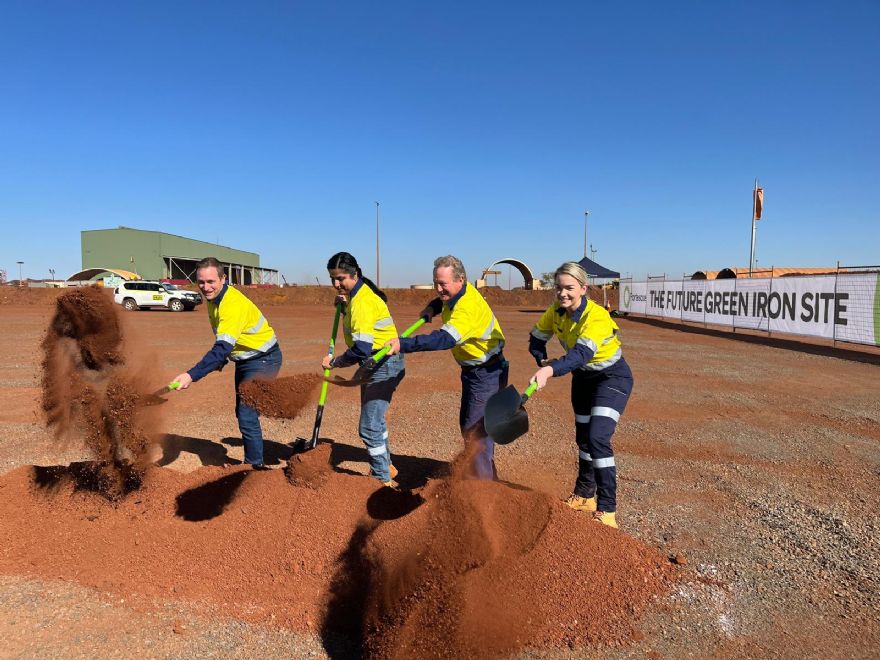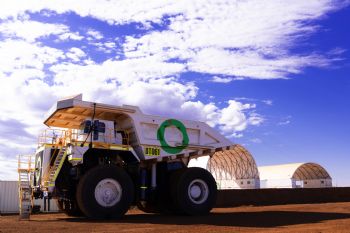 Fortescue
Fortescue has reached a new milestone on the path to building a green metal supply chain with the start of works at its Green Metal Project in the Pilbara region of Western Australia. Located at the Green Energy Hub at Christmas Creek, the $50 million project is expected to produce more than 1,500 tonnes of ‘green metal’ each year, with first production anticipated in 2025.
The plant will use green hydrogen produced at Fortescue’s gaseous and liquid hydrogen facility, the largest of its kind in Australia, together with an electric smelting furnace to produce high purity ‘green metal’. This will be suitable for use in almost any steel plant globally.
Fortescue executive chairman Dr Andrew Forrest was joined by Fortescue Metals CEO Dino Otranto, for a ceremony to mark the start of civil works at the Christmas Creek site. He said: “Today is a celebration of innovation, collaboration and stretch targets, and marks a pivotal moment in Fortescue’s journey to build a green metal supply chain.
“Iron and steel are the backbone of our infrastructure, however traditional iron and steel production processes are among the largest sources of greenhouse gas emissions. By rethinking the entire iron and steel value chain we can produce an entirely new, green industry here in Australia.”
Once in a generation opportunityHe continued: “This milestone is the culmination of bringing together green sustainable mining, large-scale renewable power and green hydrogen to produce green metal. Right now, we have a once in a generation opportunity to build a green supply chain, and Fortescue is wasting no time in seizing it.”

Fortescue’s recently commissioned green hydrogen plant can produce around 530kg of hydrogen gas per day, or around 195 tonnes annually. Powered partly by solar during the day, the plant comprises a gaseous hydrogen refuelling station (HRS) to refuel a fleet of 10 fuel cell electric vehicle hydrogen-powered coaches.
“The gaseous HRS was supported by the WA Government’s Renewable Hydrogen Fund through a $2 million grant. The Green Energy Hub also contains a hydrogen liquefaction facility, liquid hydrogen storage, and a liquid-hydrogen refueling station, along with Fortescue’s zero emissions decarbonisation prototypes.
DecarbonisationMr Otranto said: “Fortescue is moving at rapid speed to decarbonise and the completion of our hydrogen facility, which is the largest gaseous and liquid hydrogen plant on any mine site in Australia, is testament to our commitment to leading heavy industry in decarbonising. Hydrogen and fuels made using renewable energy will have a role to play in decarbonising mining, whether it is in buses, heavy mining equipment such as haul trucks and excavators, or producing green iron.
“This renewable hydrogen plant is versatile, enabling us to produce gaseous and liquid hydrogen to be used to power our mining equipment prototypes, while also providing the added benefit of refuelling our fleet of coaches at Christmas Creek.”
Roger Cook, premier of Western Australia, said: “Western Australia is on its way to becoming a global clean energy powerhouse, and a major producer, user and exporter of green iron. Hydrogen has an important role to play in remote areas like mine sites, helping to create our state’s green iron supply chain, reduce our reliance on diesel and slash on-site emissions.”
The liquid hydrogen plant will be used to power Fortescue’s Offboard Power Unit and its hydrogen-powered haul truck prototype which recently arrived at Christmas Creek. The Green Energy Hub also hosts Fortescue’s prototype battery electric haul truck and a 3MW fast-charger prototype.